I Tried Journaling For Mental Health. Here's What Actually Works
If you’re looking for a cheap and effective way to manage your mental health, look no further than journaling.
In basic terms, journaling is the act of writing informally for personal use. It can take many forms and is accessible to all ages, though generally, younger people are more known to adopt journals and diaries than adults. At its most fundamental level, journaling is a fun and creative pastime. However, it can also be utilized to help manage mental health.
While ‘regular’ journaling can be as simple as writing about your day, there is a specific purpose to therapeutic journaling. ZenCare defines therapeutic journaling as a chance to dive into emotions and thoughts with the goal of building understanding and awareness of self.
Use this article to learn about the benefits and practice of mental health journaling to see how it can improve your mental wellbeing and enrich your daily life.
The Benefits of Journaling for Mental Health

There are countless benefits to using journaling as a mental health tool, both in the act of writing itself and in using what you’ve written to build self-awareness and make positive changes.
All humans need a safe, constructive way to release emotions. Writing offers catharsis through self-expression while also helping to regulate mental and even physical health.
According to WebMD, journaling can help reduce anxiety, break negative thought cycles, regulate emotions, and promotes physical healing. The act of writing also engages EMDR, or Eye Movement Desensitization and Reprocessing, a technique that encourages the mind to properly process difficult memories. Additionally, writing helps to externalize thoughts and promotes grounding.
Journaling can also be beneficial in analyzing and understanding our thoughts and emotions. University of Rochester Medical Center cites prioritizing problems, tracking symptoms, and identifying negative thoughts and behaviors while building a positive relationship with oneself as some of the practical benefits of journaling.
Writing also creates a record of progress and positive experiences. We all struggle with negative thinking and self-esteem to some extent, which makes it difficult to objectively think about the past. However, looking back at journal entries from that time makes it easier to keep things in perspective.
In my own personal experience, journaling has been one of the most effective ways to work through past hardships and to build a better way of thinking. I have been journaling regularly for six years now, using it as an additional tool to regulate my mental health throughout college and life after. Journaling is the healthiest and most enjoyable form of self-expression that I’ve found, and I plan on continuing to journal throughout my life.
How to Begin Journaling (and stick with it long-term)
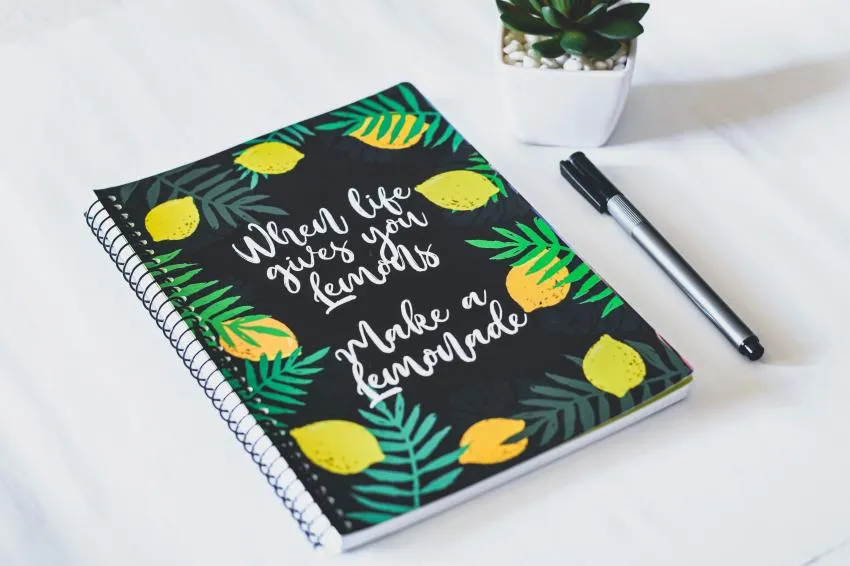
If you’ve never kept a journal before, or if you’ve tried but found it impossible to stick with, you’re not alone. It took many years for me to find the motivation to finish a journal, but once I finally built the habit and stuck with it, writing became an integral part of my daily routine.
Follow these simple steps to get started with your mental health journaling.
1. Choosing the Right Journal
If journaling is going to become a daily habit that positively impacts your wellbeing, choose to invest in a high-quality notebook from Amazon. There are many styles of notebooks out there, including but not limited to spiral, composition, leather, hardback, and novelty.
Incorporating fun patterns, colorful pens, or even stationary like stickers and washi tape can also contribute to make journaling an enjoyable experience and build the desire to stick with it long-term.
I personally favor leather journals, but while I was in school, I chose simple spiral notebooks that I could carry with me inconspicuously. Choose the notebook, physical or digital, that makes the most sense to you and your current circumstances.
If you'd like to maintain a digital journal, you can signup on Sociomix and start journaling right away.
2. What You Should Write About When Journaling
Since your journal is a tool meant to help manage your mental health, it should be uniquely utilized to fit your needs. In other words, there is no right or wrong way to keep a mental health journal, so long as you remember its purpose.
For many people, this amount of freedom can be quite daunting. If using prompts makes the most sense for you, or if you need some help getting started, there are many apps and guided journals available which will be mentioned later in the article.
3. The Fear of the Blank Page; Overcoming Writers' Block
For new writers especially, it can be hard to know where to start with journaling. The blank page can be incredibly daunting for anyone, even seasoned writers. That fear can manifest in many ways, from avoidance to procrastination and even writers’ block.
The most important thing to remember is to not put too much pressure on yourself. Art, writing, and all other creative endeavors exist as a means of self-expression. The goal of journaling should always be to understand yourself better and to positively release emotion, not to create a perfect piece of writing or art.
Additionally, don’t feel the need to structure your writing in a certain way. In many cases, you need not use structure at all. According to Psychology Today, writing in a stream-of-consciousness (writing thoughts as they come to mind without editing them) is a great way to let go of inhibitions and fight perfectionism. Use pictures, lists, pages-long paragraphs, or any other technique that feels natural and gets your creative energy flowing. The more you practice writing, just as with any other life skill, the easier it will become.
4. To Build a Habit; The Key to Sticking with Journaling Long-Term
It takes time to build a new habit. According to Psychology Today, it can take weeks or even months for new habits to form. Still, there are many ways to accelerate this process and ensure that journaling happens every day.
The first thing to focus on is setting realistic goals. Simply saying you’re going to ‘journal’ every day is vague and easily avoided. Setting a time goal (5-10 minutes) or a page goal (1-2 pages) is more concrete and fits journaling into your daily routine without stressful, unrealistic standards.
Secondly, try to make journaling an enjoyable part of the day and something to look forward to rather than a chore that needs to get done. Drinking your favorite beverage, listening to music, or simply breaking up your daily routine of work or chores all contribute to make journaling an enjoyable experience.
Finally, try to incorporate writing into your daily routine. In an article with The Healthy, psychologist Allison Lobel stresses the importance of setting aside time for journaling and recommends the evening, as getting your thoughts and worries down on paper can help reduce stress and make it easier to fall asleep. But any time of day can be effective - as long as that time is set.
In time, you will begin not only to enjoy journaling but to see the benefits of it in every aspect of your life.
5. When Journaling Makes You Feel Worse
Like any coping mechanism, journaling can become harmful when used incorrectly. The main thing to avoid is ‘overuse’; when you allow yourself to linger too long on unpleasant topics, only consider your own perspective, and spend an unhealthy amount of time in your own mind instead of interacting with others, journaling can become unhealthy.
Writing about and expressing your own feelings should never become a crutch nor a substitute for living in the present. The best kind of journaling allows the writer to examine their own feelings and thoughts constructively, with the goal of understanding themselves better and working towards healthier relationships and a healthier frame of mind.
If journaling is only making things worse, try to step back and think about what you hope to gain from writing and why the result may not be lining up with these goals. Above all, work to maintain a balance between reflecting on your life and living in the moment.
Note: Another thing that may hold you back from journaling is the fear of examining difficult thoughts and emotions. When working through traumatic events or dealing with mental illness or difficult situations, it’s always advisable to speak to a trusted friend or family member or to seek out professional help.
13 Non-traditional Ways to Journal
Traditional writing might come naturally to some, but it can seem impossible, difficult, or even boring to others. Luckily, journaling comes in many different forms, and each of them is beneficial to mental health in different ways.
From speaking out loud to incorporating art, here are thirteen non-traditional ways to maintain a journal that involve little to no writing.
1. Video Diaries

For many people, speaking is easier than writing. It’s faster, which allows for a more natural stream of thoughts, and feels more natural than putting ideas down on paper. Recording yourself through video diaries can be a less stressful, less time consuming way to journal your thoughts with many of the same benefits. Additionally, by speaking out loud and watching those videos back (if you choose to), you ground yourself more firmly in the physical world. Grounding is a technique that combats many mental health issues, most notably anxiety.
I use this method when I am too overwhelmed to write or when I need to express my ideas quickly in order to understand them later. While this is not a substitute for talking to another person, it can be useful in understanding your own thoughts. However, watching back videos of yourself can be difficult for those with self-esteem issues and more time-consuming than skimming over old journal entries.
2. Audio Journal

Using recording devices such as your phone can have many of the same benefits as video diaries. It can also be a discreet way of logging your thoughts in public. While writing in a notebook or taking a video of yourself will attract attention, audio recordings can pass as phone calls from a distance. The main drawback to this method is the amount of effort it will take to review your entries. Also, many people feel uncomfortable listening to their own voices. For these reasons, I do not prefer this method. Still, try it to see if it’s right for you!
3. Photo Journal

Somewhere between scrapbooking and regular journaling, this method incorporates photos into each journal entry. Incorporating photography can help cement memories of good experiences in your memory. Just like well-written articles use photos to elevate their points, pictures of loved ones, places, or even yourself can complete a piece of writing in a way that helps you understand it better when revisiting it days, weeks, or even years down the line.
4. Art Journal
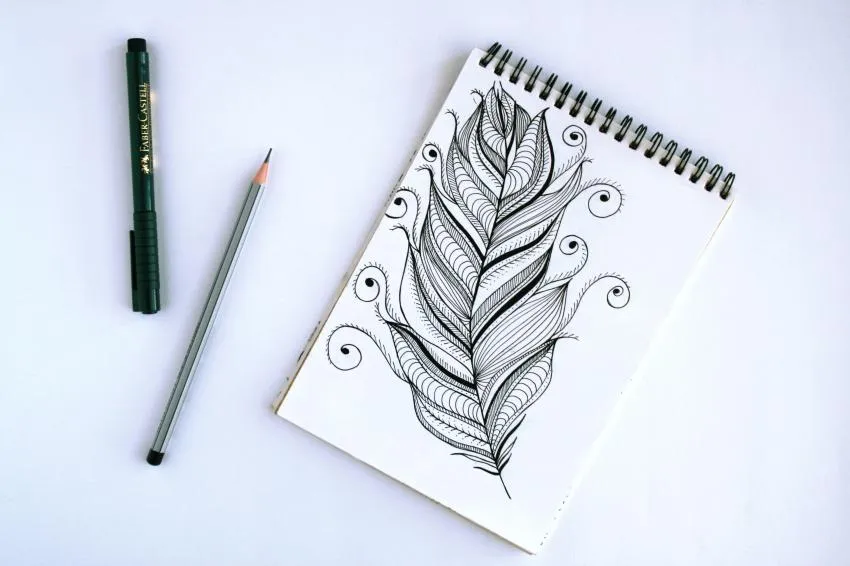
While this method is specifically designed for artists, it can be great for anyone who struggles to express themselves through words. Art journaling can be a great practice that encourages an abstract way of thinking that may be difficult to express through words alone. However, for people like me who struggle with drawing and painting, it may not be the right fit.
5. Doodle Journal
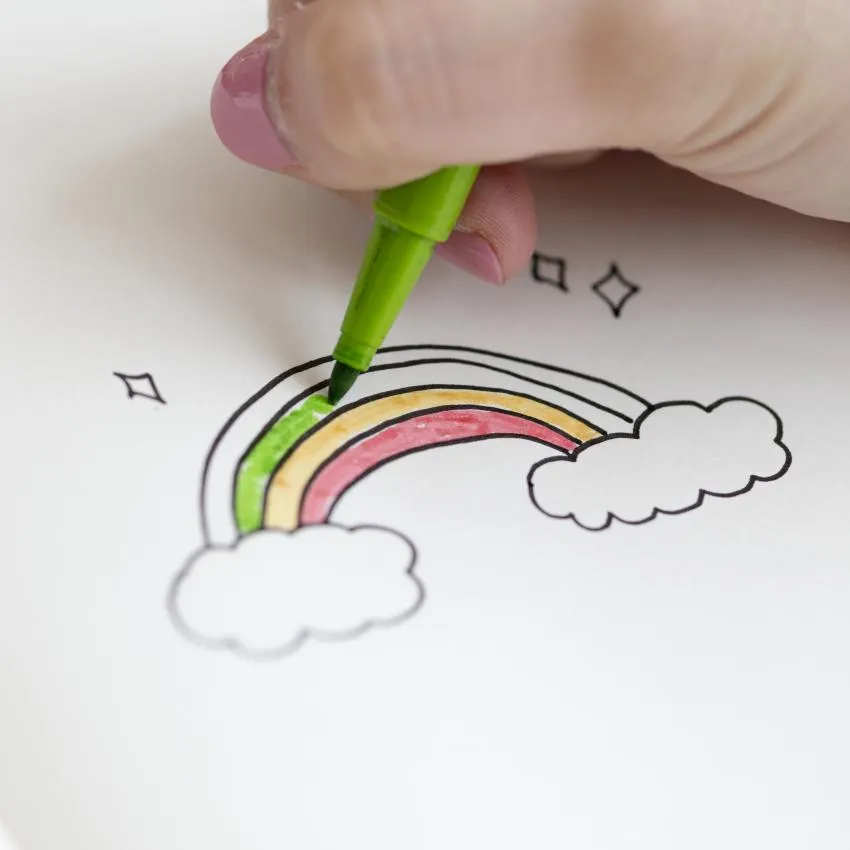
This is similar to an art journal but more about short sketches or ‘doodles’ than detailed drawings that take a long time to complete. It can be a fun way to begin describing your emotions or just to unwind after a stressful day but may not be as effective when unpacking bigger feelings and experiences. Trying this method of journaling gave me a fresh perspective on many aspects of my life but wasn’t sustainable long-term. However, I would recommend it for those who dislike writing and are looking for a lower effort and less time-consuming way to journal.
6. Scrapbook

This is a creative and fun way o express your emotions using pictures and cutouts from books or magazines to decorate each page. It allows for a lot of creative freedom and caters to a more artistic and creative type of person. There’s an element of artistry to scrapbooking that doesn’t exist the same way in writing, but it also doesn’t rely on artistic talents like drawing or painting. However, writing and drawing can also be incorporated in the scrapbook if you wish.
I used this method of journaling when I first started, and it helped me understand what I was feeling in a fun and creative way. However, I found it to be challenging when working through specific issues or circumstances.
7. Guided Journal
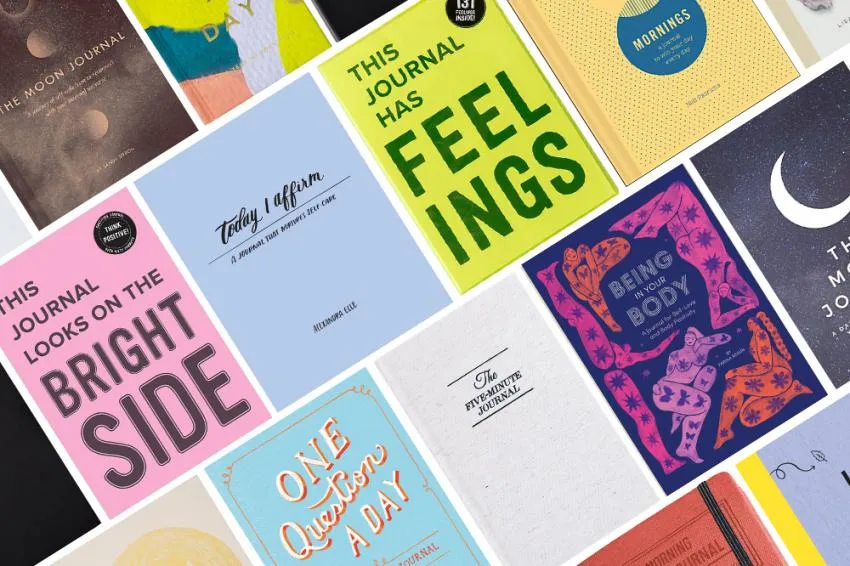
For those working through a specific challenge, a guided journal can be a powerful tool to maintain emotional wellbeing. There are multitudes of options for guided journaling catering to all sorts of audiences and situations, including (but not limited to) teenagers, men, depression, anxiety, and grief. These books give guided prompts designed to address whatever it is you’re experiencing, and their very existence proves that these experiences are universal. However, they are less appropriate for those who wish to journal about general, or a multitude of, topics.
8. Bullet Journal
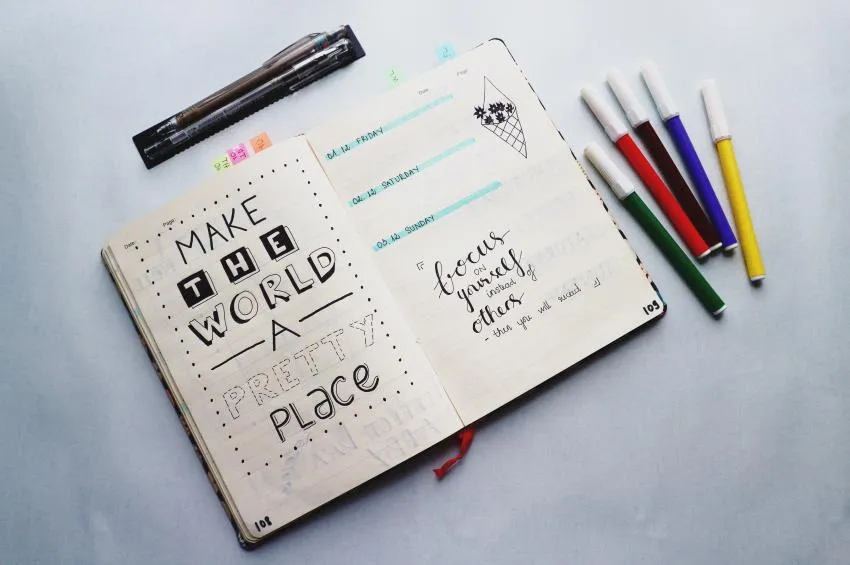
According to Guided Health, a bullet journal is equal parts “day planner, diary, and written meditation”. In short, a bullet journal is a small, completely customizable book that aims to help you keep track of your life.
The following video explains what bullet journals (bu-jo’s) are and how they work:
The biggest strength of the bu-jo is its customizable format. It can be as artistic or as basic as you want and allows more freedom than a regular planner or app. However, they aren’t an effective way to process or express emotions. I would recommend pairing this type of book with a regular journal.
9. Planner
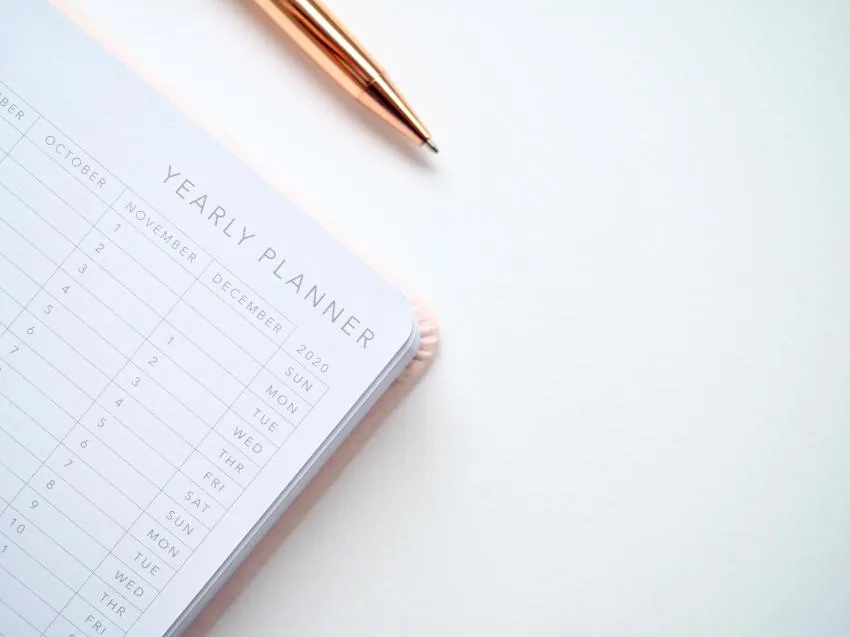
If you want to focus on the specific patterns, feelings, and habits and the impact they have on your wellbeing day to day, consider using a planner. Dealing with mental health issues can make it difficult to be objective, especially when looking back over long periods of time. It can be easy to dismiss all the progress and positive achievements in your life when you’re feeling low; keeping track of them by using a planner is a way to scientifically disprove those negative thoughts. Planners can also be used to log how much time you spend doing positive things for your mental health like exercising, spending time with friends, and taking time for yourself. It’s a proactive way to prioritize self-care and take a hard look at your day-to-day life in order to make improvements and give yourself credit where credit is due. However, it is not the ideal method for deep-diving into your emotions or using writing as catharsis.
10. Three-Year Journal
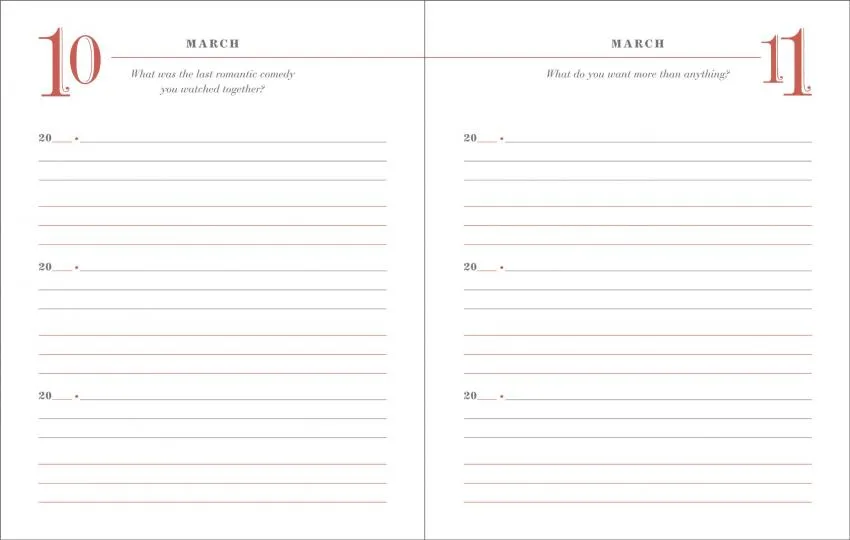
Three-year journals are designed to record your experiences each day across a span of three years. It’s an easy way to compare where you are now to where you were one or two years ago and to build mindfulness as you reflect back on each day. However, there is little space to write on every page.
I use my own three-year journal at the end of each day in addition to my regular journal and find it enjoyable to recap the best (and worst) parts of each day and to think about what experiences I want to bring into my life in the future.
11. Quote Journal
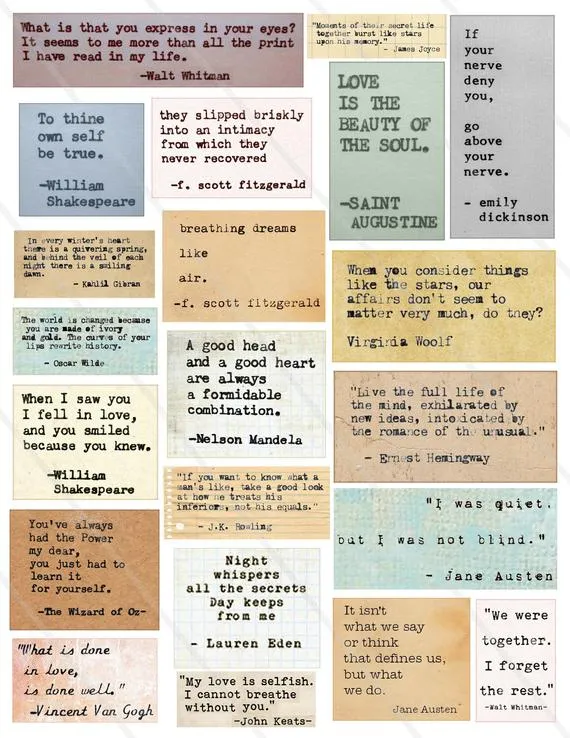
Musicians, authors, and poets create art that resonates with us and our individual experiences. If you want to express yourself with words but aren’t sure where to start, gathering quotes that resonate with you can be a great starting point. Start by simply collecting quotes that speak to you. There’s also the option of using your own voice to explore what these quotes mean to you and how they fit together.
This is a great method to use in moderation; while it is invaluable to know that you are not alone in your struggles, be careful not to overindulge in other people’s sorrow. I personally use this method intermittently throughout my writing, but don’t rely on it as my primary method of self-expression.
12. Letters
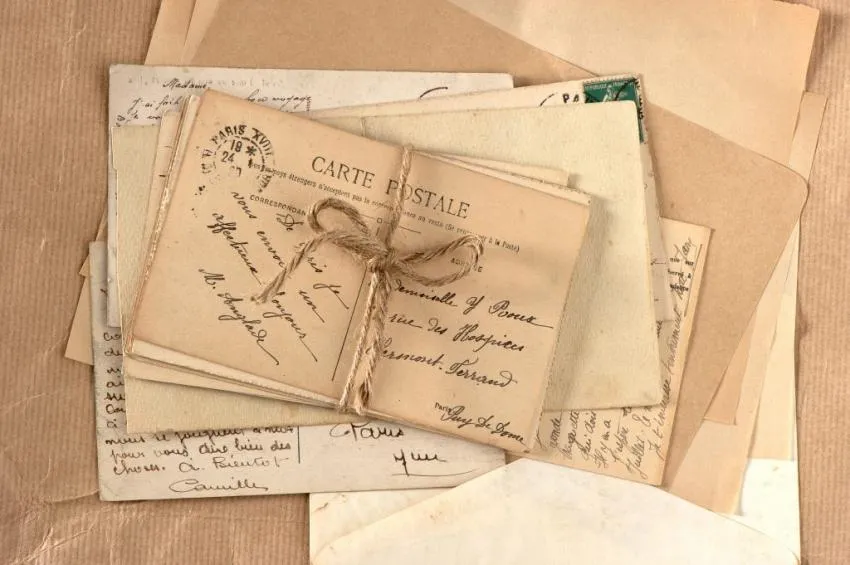
Writing in a letter format addressed to friends, relatives, or even X can be a helpful framework when exploring mental health. It gives the writer the freedom to express themselves and their struggles in a risk-free way; that is, you won’t have to fear the reactions of whoever you’re writing to because the letters remain private.
Another way to use letters is by addressing them to your past and/or future self. By writing to your past self, you can begin to build compassion and understanding towards yourself as well as appreciating the growth and positive progress you have made. By writing to the future, you can more clearly understand the direction you want to take in life and set concrete goals to follow moving forward.
This strategy of journaling is perfect for those who need a bit of direction but can express themselves within a loose framework. However, writing with an audience member in mind (even imaginary) can be constricting. I don’t often use this strategy within my own journaling, but I do find it helpful when exploring the different relationships in my life and the impact each person has on my wellbeing, both positively and negatively.
13. Gratitude Journal

Practicing gratitude can lead to many mental health benefits. According to Nationwide Childrens’, gratitude can lead to lower rates of stress and depression and increase optimism. Mental Health First Aid also states that gratitude practice can lower anxiety and feelings of apprehension. Investing time in a gratitude journal is a simple way of reaping these benefits by taking stock of everything wonderful in life. Our brains are wired to focus on the negatives; this is an inherited trait that helped to keep our ancestors safe from threats. However, gratitude practice can help us find balance by appreciating everything we have.
Summary
Journaling for mental health can be beneficial to anyone and everyone. By using journaling as a tool catered to your individual needs, staying consistent, and remaining mindful of its purpose, you will soon begin to see improvements and benefits in every aspect of your life.
Opinions and Perspectives
Started with the intention of managing anxiety but found it helps with creativity too.
Interesting how different methods work for different people. Proves there's no one-size-fits-all approach.
The tips about building a sustainable habit are really practical. Small steps add up.
My handwriting is terrible but the article reminded me that doesn't matter. It's about the process.
Love how journaling helps identify negative thought patterns. It's like being your own therapist.
Great point about setting realistic goals. Starting with 5 minutes feels much more manageable.
The scientific benefits mentioned are fascinating. Didn't realize writing could impact physical health.
Surprised the article didn't mention voice notes as an option. That's been my go-to method.
Been doing the photo journal thing without realizing it was a legitimate method. Nice to know!
Writing letters to my future self has really helped clarify my goals and aspirations.
Sometimes I go weeks without writing, but the article helped me realize that's okay too.
My therapist recommended journaling and I was resistant at first. Now I get why she suggested it.
The warning about overuse is important. I had to learn to balance reflection with action.
Never thought about journaling as a form of self-care before reading this. Changed my perspective.
The suggestion about colorful pens and stickers might seem silly but it really does make it more fun!
I combine several methods depending on my needs. Some days just bullet points, others full pages.
Love how the article emphasizes there's no wrong way to journal. Takes the pressure off.
Started journaling during therapy and continued after. Really helps reinforce what I learn in sessions.
Not sure about the video diary method. Seems like it would be harder to look back through entries.
Finding the right time of day made such a difference. Morning works better for me than evening.
The part about making it enjoyable rather than a chore is crucial. I light a candle and make tea first.
In response to the handwriting comment - yes! My writing gets so messy when I'm really in the flow.
I was skeptical about the benefits but tracking my mood through journaling has shown clear patterns.
The article could have mentioned more about using prompts. They've been really helpful for me when stuck.
Actually started with scrapbooking and gradually added more writing. Nice way to ease into it.
Anyone else keep their journal locked away? I get paranoid about others reading my private thoughts.
I find my journaling style changes depending on my mood. Sometimes I need structure, other times just free writing.
The quote journal idea is interesting. Might help on days when I'm struggling to express myself.
Really appreciate the practical tips about building it into a daily routine. That's been key for me sticking with it.
Not convinced about the whole catharsis thing. Sometimes writing about problems just makes me dwell on them more.
Reading through old entries is both cringe-worthy and enlightening. Amazing to see how much I've grown.
Just started and already noticing improvements in my mental clarity. Wish I'd known about this sooner!
The section about choosing the right journal is helpful. I kept giving up because I was using notebooks I didn't enjoy writing in.
Started with a guided journal and it really helped build the habit. Now I can write freely without prompts.
I appreciate how the article addresses the potential downsides and not just the benefits. Very balanced perspective.
The three-year journal format sounds fascinating. Being able to compare different years side by side must be eye-opening.
In response to the video diary question - I do it sometimes! Feels awkward at first but you get used to it. Great for processing things quickly.
I'm curious about video diaries but feel weird talking to myself. Has anyone here tried it?
The article makes a good point about balance. Journaling should complement life, not replace living it.
Anyone else find that their handwriting gets really messy when writing about emotional topics? It's like my hand can't keep up with my thoughts.
The letters to yourself concept is brilliant. Writing to my past self has helped me process old trauma.
Not sure I agree that it helps with physical healing. That claim seems a bit far-fetched to me.
I actually prefer digital journaling. Being able to search old entries and type quickly makes it easier for me to maintain the habit.
As someone who struggled with writers block, the stream of consciousness tip was really helpful. Just write whatever comes to mind!
Interesting point about EMDR. Never knew writing could have similar benefits to that therapy technique.
The evening journaling suggestion is spot on. Really helps clear my mind before bed.
I tried the gratitude journal approach but found it a bit forced. Regular free writing works better for me personally.
Love the idea of combining photos with writing. Looking back at happy memories while processing thoughts seems really powerful.
The part about journaling becoming unhealthy is so important. I found myself obsessing over past entries and had to step back.
I disagree that journaling is mainly for young people. I'm in my 50s and started last year. It's been incredibly therapeutic.
In response to the bullet journal question - I've been doing it for 6 months and while setup takes time, the daily maintenance isn't bad at all. Start simple!
The advice about not putting pressure on yourself really resonates. I used to get hung up on writing perfectly but now I just let my thoughts flow freely.
Has anyone tried bullet journaling? I love the idea but worry it's too time consuming to maintain.
I wish I had started journaling years ago. It's been such a game changer for managing my anxiety. Just getting those racing thoughts out of my head and onto paper helps me feel more in control.
The 13 different journaling styles are so helpful! I never knew there were so many options beyond traditional writing. Might give audio journaling a try since I'm better at speaking my thoughts.
I've been wanting to try journaling for a while but felt intimidated. This article really breaks it down in an approachable way.
